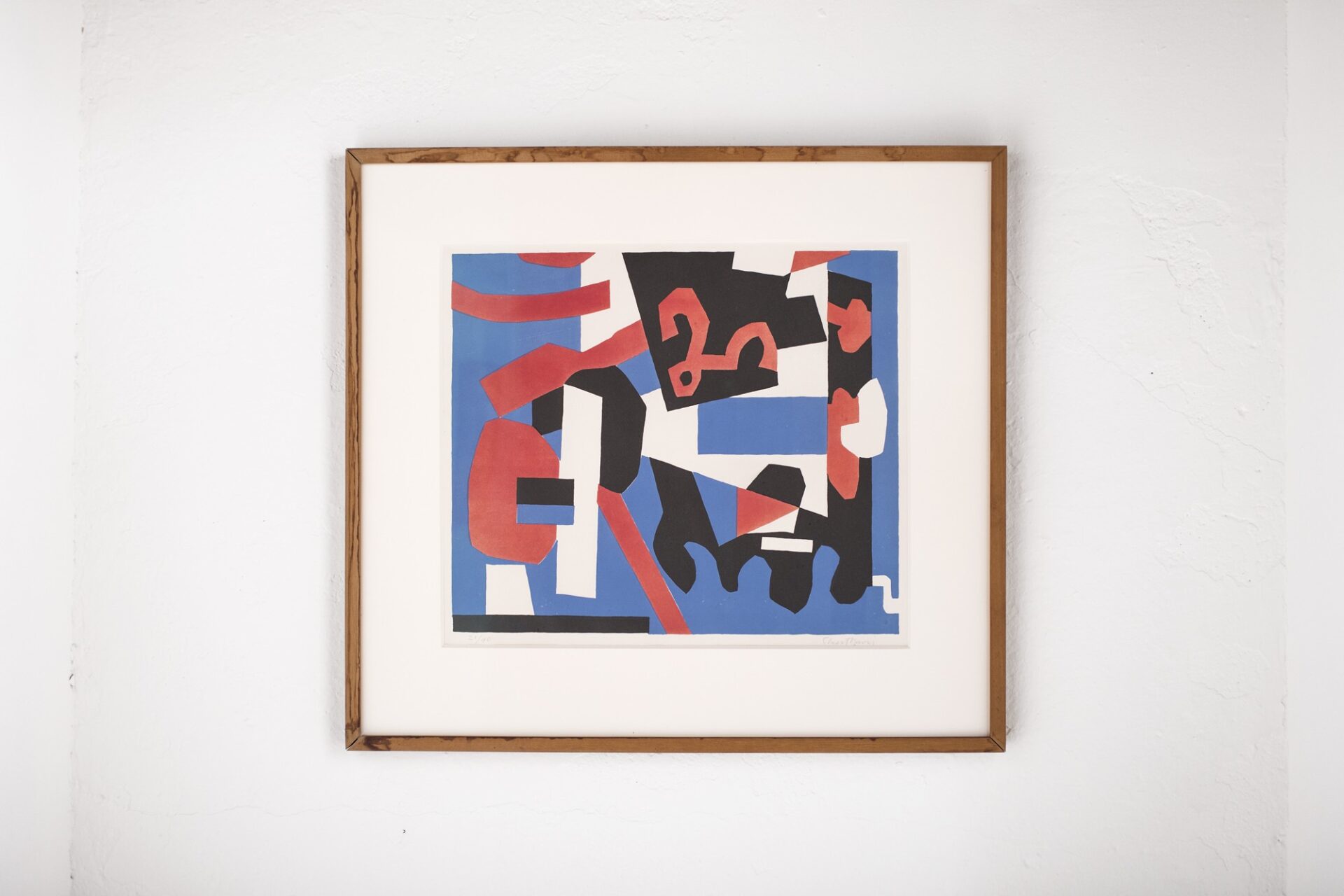Stuart Davis was born in Philadelphia in 1892. He moved to New York in 1909 to attend the Robert Henri School of Art. In 1913, he exhibited in the Armory Show, and in 1917, he had his first solo exhibition in New York. Davis created many “detail studies” related to paintings; the artist returned to and reworked forms and compositions again and again throughout his career, using varied scales and color combinations.1
Donald Judd opened his Arts Magazine review of Stuart Davis: Exhibition of Recent Paintings, 1958–1962 at the Downtown Gallery, New York, by writing, “There should be applause. Davis, at sixty-seven, is still a hot shot. Persistent painters are scarce; painters with only a decade or less of good work are numerous.”2 Two decades later, Judd wrote in a 1981 essay, “I liked Stuart Davis’s work very early, which certainly deserves to be liked.”3
Detail Study for Cliché, an edition of forty, was printed by Arnold Singer at the Contemporaries Graphic Art Centre in New York. Like Judd, Singer also studied at the Art Students League, where he focused on lithography. Detail Study for Cliché has been described as “one of the finest color lithographs printed in America before 1960.”4
Cliché is a 1955 painting by Davis in the collection of the Solomon R. Guggenheim Museum, New York.
